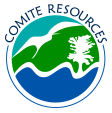Are there wetlands on your worksite?
Comite Resources will keep your business out of trouble with regulatory agencies and in compliance with permitted activities.
Before construction starts, know whether the property contains wetlands that might be impacted by the construction or other activities. If wetlands are present, a permit (e.g., CUP, 404) will likely be needed in order to proceed. Without these permits, there are risks of fines or more serious interventions such as a project delay or shut down by government agencies.
We keep your project moving - even if wetlands are present.
Because we specialize in wetland projects, Comite Resources scientists can take you through every step of the process as quickly and efficiently as possible.
Comite Resources works closely with government agencies (LDEQ, LDNR, USACE, LDH) to help clients legally develop sites that contain wetlands.
No matter your project size, Comite Resources can help navigate through the legal waters of working on a site with wetlands. The steps for most projects include: 1) a wetland delineation, 2) permitting, and if necessary 3) a mitigation plan.
STEP 1: IDENTIFY YOUR WETLANDS
Comite Resources will carry out a thorough review of your project site to determine if wetlands occur on the property, and if so, delineate their size and classification (see Wetlands Delineations). Our field scientists will compile this information into an internal report for your examination. We will review the report with you, giving you our expert assessments, advice, and answers to any questions you may have.
STEP 2: OBTAIN YOUR PERMITS
When your development plans might impact wetlands, one or more of the following agencies will require a permit for you to continue. We walk you through the permitting process to keep your projects moving forward in the most efficient way possible.
- U.S. Army Corps of Engineers (USACE)
- Louisiana Department of Environmental Quality (LDEQ)
- Louisiana Department of Natural Resources (LDNR)
- Louisiana Department of Wildlife and Fisheries (LDWF)
Comite Resources staff will assist in completing the necessary applications to grant you the permits for your project to move forward. These applications often include a property map of your site, the project’s dredge/fill calculations, and other information that Comite Resources will help procure.
STEP 3: CREATE A MITIGATION PLAN
Obtaining your permits might require a mitigation plan if impacting wetlands is unavoidable. When this is the case, a mitigation plan that will abate any impact to wetlands is necessary before state and federal regulatory agencies will issue a permit. Our experienced scientists will work with you to develop an appropriate mitigation plan customized to your project and your needs.
Possible Mitigation Options:
- Contribute to a State-Sponsored Wetlands Restoration Fund
This option is generally available only for very small projects for which there are no other feasible mitigation alternatives. - Purchase Credits from an Approved Commercial Mitigation Bank
You may purchase mitigation credits (acres) to offset the impact to wetlands on your site. Comite Resources is in contact with several wetland mitigation banks that may be able to assist. - Submit an Individual Mitigation Plan
If the other options are not available, we will help you develop an individual mitigation plan to submit to regulatory government agencies for consideration.


